#shakespeare's hamlet
Photo







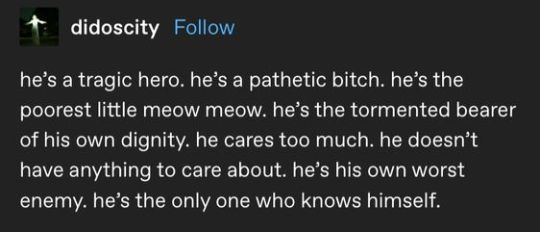

Shitty Hamlet aesthetic: i know we’re about 10 minutes off from some new hamlet adaptation where all his soliloquies are delivered as tiktoks or whatever but to be honest i think he’d fit right in with a lot of the userbase so maybe we should let it happen
#hamlet#shakespeare#classics#theatre#shakespeare's hamlet#hamlet aesthetic#shakespeare aesthetic#classics aesthetic#theatre aesthetic#shakespeare's hamlet aesthetic#hamlet kin#shakespeare kin#classics kin#theatre kin#shakespeare's hamlet kin#shitty aesthetic TM
839 notes
·
View notes
Text
And another thing. This blog is 100%, twenty-four hours a day, seven days a week, a Laertes apologist zone. He was literally just partying in France. He should've been in the club.
#hamlet#laertes#shakespeare's hamlet#he was literally just some guy#justice for laertes and ophelia tbh
138 notes
·
View notes
Text
Dead Guy Death Match Round 4 Poll: 8
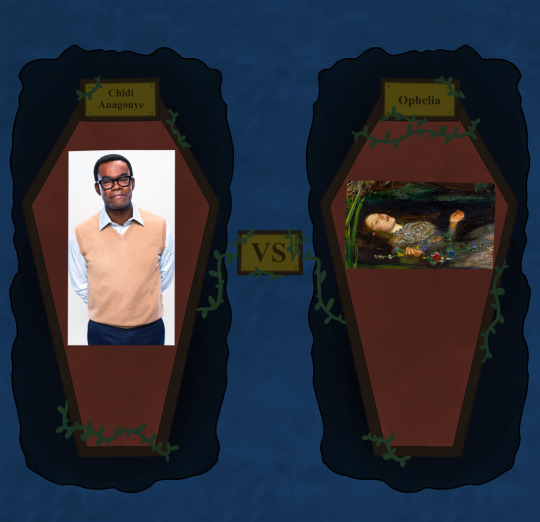
#tournament polls#the good place#tgp#hamlet#hamlet shakespeare#shakespeare's hamlet#chidi anagonye#tgp chidi#chidi tgp#ophelia#ophelia hamlet#hamlet ophelia#round 4
61 notes
·
View notes
Text
The only rewrite I wish for is a Hamlet musical. The story would stay the same BUT they have to squeeze every song from the lion king in there.
33 notes
·
View notes
Text
Henry Clerval (from the book Frankenstein) , Horatio (from Hamlet) and Narziß/Narzissus (from the book Narziß und Goldmund) = People who were too good for this world, which I want to give a big hug, who took care of thier best friend who went down a dark path and with who they fell in love with (Horatio is hinted to be in love with Hamlet, Narziß literally confesses to Goldmund and Henry being in love with Victor Frankenstein is just a very common theory) but the love and the friendship was doomed from the very beginning by some other horrible things so they probably never felt a lot happiness in the book and they suffered a horrible lot.
#I feel so sorry for them#I feel like they would get along great#Personality wise#I love them so much#They are too good for thier cruel world#horatio#Narzissus#henry clerval#Frankenstein#mary shelly#mary shelly's frankenstein#hamlet#shakespeare#Shakespeare's hamlet#william shakespeare#shakesqueer#narzissus and goldmund#narziss und goldmund#narziß und goldmund#hermann hesse#classical literature#classical lit#gothic lit#gothic literature
63 notes
·
View notes
Text
One massive, legitimate way to improve as a writer or artist or in any creative endeavor really, is to become absolutely obsessed with something and to allow yourself to be weird about it. Genuinely mean this btw.
#dc comics#disco elysium#shakespeare#hamlet#scott pilgrim#<- all this things have made me a better#writer and artist for both fan creation#and for my own original work#literal life hack#allow yourself to become obsessive and cringe to a certain degree#birdy chirps
45K notes
·
View notes
Text
Science and the unconscious
In the preceding chapters C. G. Jung and some of his associates have tried to make clear the role played by the symbol-creating function in man’s unconscious psyche and to point out some fields of application in this newly discovered area of life. We are still far from understanding the unconscious or the archetypes — those dynamic nuclei of the psyche — in all their implications. All we can see now is that the archetypes have an enormous impact on the individual, forming his emotions and his ethical and mental outlook, influencing his relationships with others, and thus affecting his whole destiny. We can also see that the arrangement of archetypal symbols follows a pattern of wholeness in the individual, and that an appropriate understanding of the symbols can have a healing effect. And we can see that the archetypes can act as creative or destructive forces in our mind: creative when they inspire new ideas, destructive when these same ideas stiffen into conscious prejudices that inhibit further discoveries.
Jung has shown in his chapter how subtle and differentiated all attempts at interpretation must be, in order not to weaken the specific individual and cultural values of archetypal ideas and symbols by leveling them out- - i.e. by giving them a stereotyped, intellectually formulated meaning. Jung himself dedicated his entire life to such investigations and interpretative work; naturally this book sketches only an infinitesimal part of his vast contribution to this new field of psychological discovery. He was a pioneer and remained fully aware that an enormous number of further questions remained unanswered and call for further investigation. This is why his concepts and hypotheses are conceived on as wide a basis as possible (without making them too vague and all-embracing) and why his views form a so-called “open system” that does not close the door against possible new discoveries.
To Jung, his concepts were mere tools or heuristic hypotheses that might help us to explore the vast new area of reality opened up by the discovery of the unconscious— a discovery that has not merely widened our whole view of the world but has in fact doubled it. We must always ask now whether a mental phenomenon is conscious or unconscious and, also, whether a “real” outer phenomenon is perceived by conscious or unconscious means.
The powerful forces of the unconscious most certainly appear not only in clinical material but also in the mythological, religious, artistic, and all the other cultural activities by which man expresses himself. Obviously, if all men have common inherited patterns of emotional and mental behavior (which Jung called the archetypes), it is only to be expected that we shall find their products (symbolic fantasies, thoughts, and actions) in practically every field of human activity.
Important modern investigations of many of these fields have been deeply influenced by Jung’s work. For instance, this influence can be seen in the study of literature, in such books as J. B. Priestley’s Literature and Western Man, Gottfried Diener’s Fausts Weg zu Helena, or James Kirsch’s Shakespeare’s Hamlet. Similarly, Jungian psychology has contributed to the study of art, as in the writings of Herbert Read or of Aniela Jaffe, Erich Neumann’s examination of Henry Moore, or Michael Tippett’s studies in music. Arnold Toynbee’s work on history and Paul Radin’s on anthropology have benefited from Jung’s teachings, as have the contributions to sinology made by Richard Wilhelm, Enwin Rousselle, and Manfred Porkert.
Of course, this does not mean that the special features of art and literature (including their interpretations) can be understood only from their archetypal foundation. These fields all have their own laws of activity; like all really creative achievements, they cannot ultimately be rationally explained. But within their areas of action one can recognize the archetypal patterns as a dynamic background activity. And one can often decipher in them (as in dreams) the message of some seemingly purposive, evolutionary tendency of the unconscious.
The fruitfulness of Jung’s ideas is more immediately understandable within the area of the cultural activities of man: Obviously, if the archetypes determine our mental behavior, they must appear in all these fields. But, unexpectedly, Jung’s concepts have also opened up new ways of looking at things in the realm of the natural sciences as well—for instance, in biology.
The physicist Wolfgang Pauli has pointed out that, due to new discoveries, our idea of the evolution of life requires a revision that might take into account an area of interrelation between the unconscious psyche and biological processes. Until recently it was assumed that the mutation of species happened at random and that a selection took place by means of which the “meaningful,” well-adapted varieties survived, and the others disappeared. But modern evolutionists have pointed out that the selections of such mutations by pure chance would have taken much longer than the known age of our planet allows.
Jung’s concept of synchronicity may be helpful here, for it could throw light upon the occurrence of certain rare “border-phenomena,” or exceptional events; thus it might explain how “meaningful” adaptations and mutations could happen in less time than that required by entirely random mutations. Today we know of many instances in which meaningful “chance” events have occurred when an archetype is activated. For example, the history of science contains many cases of simultaneous invention or discovery. One of the most famous of such cases involved Darwin and his theory of the origin of species: Darwin had developed the theory in a lengthy essay, and in 1844 was busy expanding this into a major treatise.
While he was at work on this project he received a manuscript from a young biologist, unknown to Darwin, named A. R. Wallace. The manuscript was a shorter but otherwise parallel exposition of Darwin’s theory. At the time Wallace was in the Molucca Islands of the Malay Archipelago. He knew of Darwin as a naturalist, but had not the slightest idea of the kind of theoretical work on which Darwin was at the time engaged.
In each case a creative scientist had independently arrived at a hypothesis that was to change the entire development of the science. And each had initially conceived of the hypothesis in an intuitive “flash” (later backed up by documentary evidence). The archetypes thus seem to appear as the agents, so to speak, of a creatio continua. (What Jung calls synchronistic events are in fact something like “acts of creation in time.”)
Similar “meaningful coincidences” can be said to occur when there is a vital necessity for an individual to know about, say, a relative’s death, or some lost possession. In a great many cases such information has been revealed by means of extrasensory perception. This seems to suggest that abnormal random phenomena may occur when a vital need or urge is aroused; and this in turn might explain why a species of animals, under great pressure or in great need, could produce “meaningful” (but acausal) changes in its outer material structure.
But the most promising field for future studies seems (as Jung saw it) to have unexpectedly opened up in connection with the complex field of microphysics. At first sight, it seems most unlikely that we should find a relationship between psychology and microphysics. The interrelation of these sciences is worth some explanation.
The most obvious aspect of such a connection lies in the fact that most of the basic concepts of physics (such as space, time, matter, energy, continuum or field, particle, etc.) were originally intuitive, semi-mythological, archetypal ideas of the old Greek philosophers — ideas that then slowly evolved and became more accurate and that today are mainly expressed in abstract mathematical terms. The idea of a particle, for instance, was formulated by the fourth-century B.C. Greek philosopher Leucippus and his pupil Democritus, who called it the “atom” i.e. the “indivisible unit.” Though the atom has not proved indivisible, we still conceive matter ultimately as consisting of waves and particles (or discontinuous “quanta”).
The idea of energy, and its relationship to force and movement, was also formulated by early Greek thinkers, and was developed by Stoic philosophers. They postulated the existence of a sort of life-giving “tension” (tonos), which supports and moves all things. This is obviously a semi-mythological germ of our modern concept of energy.
Even comparatively modern scientists and thinkers have relied on half-mythological, archetypal images when building up new concepts. In the 17th century, for instance, the absolute validity of the law of causality seemed “proved” to Rene Descartes “by the fact that God is immutable in His decisions and actions.” And the great German astronomer Johannes Kepler asserted that there are not more and not less than three dimensions of space on account of the Trinity.
These are just two examples among many that show how even our modern and basic scientific concepts remained for a long time linked with archetypal ideas that originally came from the unconscious. They do not necessarily express “objective” facts (or at least we cannot prove that they ultimately do) but spring from innate mental tendencies in man — tendencies that induce him to find “satisfactory” rational explanatory connections between the various outer and inner facts with which he has to deal. When examining nature and the universe, instead of looking for and finding objective qualities, “man encounters himself,” in the phrase of the physicist Werner Heisenberg.
Because of the implications of this point of view, Wolfgang Pauli and other scientists have begun to study the role of archetypal symbolism in the realm of scientific concepts. Pauli believed that we should parallel our investigation of outer objects with a psychological investigation of the inner origin of our scientific concepts. (This investigation might shed new light on a far-reaching concept to be introduced later in this chapter - the concept of a “one-ness” between the physical and psychological spheres, quantitative and qualitative aspects of reality).
Besides this rather obvious link between the psychology of the unconscious and physics, there, are other even more fascinating connections. Jung (working closely with Pauli) discovered that analytical psychology has been forced by investigations in its own field to create concepts that turned out later to be strikingly similar to those created by the physicists when confronted with microphysical phenomena. One of the most important among the physicists’ concepts is Niels Bohr’s idea of complementarity.
Modern microphysics has discovered that one can describe light only by means of two logically opposed but complementary concepts: The ideas of particle and wave. In grossly simplified terms, it might be said that under certain experimental conditions light manifests itself as if it were composed of particles; under others, as if it were a wave. Also, it was discovered that we can accurately observe either the position or the velocity of a subatomic particle - but not both at once. The observer must choose his experimental set-up, but by doing so he excludes (or rather must “sacrifice”) some other possible setup and its results. Furthermore, the measuring apparatus has to be included in the description of events because it has a decisive but uncontrollable influence upon the experimental set-up.
Pauli says: “The science of microphysics, on account of the basic ‘complementary’ situation, is faced with the impossibility of eliminating the effects of the observer by determinable correctives and has therefore to abandon in principle any objective understanding of physical phenomena. Where classical physics still saw ‘determined causal natural laws of nature’ we now look only for ‘statistical laws’ with ‘primary possibilities’.”
In other words, in microphysics the observer interferes with the experiment in a way that cannot be measured and that therefore cannot be eliminated. No natural laws can be formulated, saying “such-and-such will happen in every case.” All the microphysicist can say is “such-and-such is, according to statistical probability, likely to happen.” This naturally represents a tremendous problem for our classical physical thinking. It requires a consideration, in a scientific experiment, of the mental outlook of the participant-observer: It could thus be said that scientists can no longer hope to describe any aspects of outer objects in a completely “objective” manner.
Most modern physicists have accepted the fact that the role played by the conscious ideas of an observer in every microphysical experiment cannot be eliminated; but they have not concerned themselves with the possibility that the total psychological condition (both conscious and unconscious) of the observer might play a role as well. As Pauli points out, however, we have at least no a priori reasons for rejecting this possibility. But we must look at this as a still unanswered and an unexplored problem.
Bohr’s idea of complementarity is especially interesting to jungian psychologists, for Jung saw that the relationship between the conscious and unconscious mind also forms a complementary pair of opposites. Each new content that comes up from the unconscious is altered in its basic nature by being partly integrated into the conscious mind of the observer. Even dream contents (if noticed at all are in that way semi-conscious. And each enlargement of the observer’s consciousness caused by dream interpretation has again an immeasurable repercussion and influence on the unconscious. Thus the unconscious can only be approximately described (like the particles of microphysics) by paradoxical concepts. What it really is “in itself” we shall never know, just as we shall never know this about matter.
To take the parallels between psychology and microphysics even further: What Jung calls the archetypes (or patterns of emotional and mental behavior in man) could just as well be called, to use Pauli’s term, “primary possibilities” of psychic reactions. As has been stressed in this book, there are no laws governing the specific form in which an archetype might appear. There are only “tendencies” (see p. 67) that, again, enable us to say only that such-and-such is likely to happen in certain psychological situations.
As the American psychologist William James once pointed out, the idea of an unconscious could itself be compared to the “field” concept in physics. We might say that, just as in a magnetic field the particles entering into it appear in a certain order, psychological contents also appear in an ordered way within that psychic area which we call the unconscious. If we call something “rational” or “meaningful” in our conscious mind, and accept it as a satisfactory “explanation” of things, it is probably due to the fact that our conscious explanation is in harmony with some preconscious constellation of contents in our unconscious.
In other words, our conscious representations are sometimes ordered (or arranged in a pattern) before they have become conscious to us. The 19th-century German mathematician Karl Friedrich Gauss gives an example of an experience of such an unconscious order of ideas: He says that he found a certain rule in the theory of numbers “not by painstaking research, but by the Grace of God, so to speak. The riddle solved itself as lightning strikes, and I myself could not tell or show the connection between what I knew before, what I last used to experiment with, and what produced the final success.” The French scientist Henri Poincare is even more explicit about this phenomenon; he describes how during a sleepless night he actually watched his mathematical representations colliding in him until some of them “found a more stable connection. One feels as if one could watch one’s own unconscious at work, the unconscious activity partially becoming manifest to consciousness without losing its own character. At such moments one has an intuition of the difference between the mechanisms of the two egos.”
As a final example of parallel developments in microphysics and. psychology, we can consider Jung’s concept of meaning. Where before men looked for causal (i.e. rational) explanations of phenomena, Jung introduced the idea of looking for the meaning (or, perhaps we could say, the “purpose”). That is, rather than ask why something happened (i.e. what caused it), Jung asked: What did it happen for? This same tendency appears in physics: Many modern physicists are now looking more for “connections” in nature than for causal laws (determinism).
Pauli expected that the idea of the unconscious would spread beyond the “narrow frame of therapeutic use” and would influence all natural sciences that deal with general life phenomena. Since Pauli suggested this development he has been echoed by some physicists who are concerned with the new science of cybernetics— the comparative study of the “control” system formed by the brain and nervous system and such mechanical or electronic information and control systems as computers. In short, as the modern French scientist Oliver Costa de Beauregard has put it, science and psychology should in future “enter into an active dialogue.”
The unexpected parallelisms of ideas in psychology and physics suggest, as Jung pointed out, a possible ultimate one-ness of both fields of reality that physics and psychology study—i.e. a psychophysical one-ness of all life phenomena. Jung was even convinced that what he calls the unconscious somehow links up with the structure of inorganic matter—a link to which the problem of so-called “psychosomatic” illness seems to point. The concept of a Unitarian idea of reality (which has been followed up by Pauli and Erich Neumann) was called by Jung the unus mundus (the one world, within which matter and psyche arc not yet discriminated or separately actualized). He paved the way toward such a Unitarian point of view by pointing out that an archetype shows a “psychoid” (i.e. not purely psychic but almost material) aspect when it appears within a synchronistic event — for such an event is in effect a meaningful arrangement of inner psychic, and outer facts.
In other words, the archetypes not only fit into outer situations (as animal patterns of behavior fit into their surrounding nature); at bottom they tend to become manifest in a synchronistic “arrangement” that includes both matter and psyche. But these statements are just hints at some directions in which the investigation of life phenomena might proceed. Jung felt that we should first learn a great deal more about the interrelation of these two areas (matter and psyche) before rushing into too many abstract speculations about it.
The field that Jung himself felt would be most fruitful for further investigations was the study of our basic mathematical axiomata—which Pauli calls “primary mathematical intuitions,” and among which he especially mentions the ideas of an infinite series of numbers in arithmetic, or of a continuum in geometry, etc. As the German-born author Hannah Arendt has said, “with the rise of modernity, mathematics do not simply enlarge their content or reach out into the infinite to become applicable to the immensity of an infinite and infinitely growing, expanding universe, but cease to be concerned with appearance at all. They are no longer the beginnings of philosophy, or the ‘science’ of Being in its true appearance, but become instead the science of the structure of the human mind.” (A Jungian would at once add the question: Which mind? The conscious or the unconscious mind?)
As we have seen with reference to the experiences of Gauss arid Poincare, the mathematicians also discovered the fact that our representations are “ordered” before we become aware of them. B. L. van der Waerden, who cites many examples of essential mathematical insights arising from the unconscious, concludes: “...the unconscious is not only able to associate and combine, but even to judge. The judgment of the unconscious is an intuitive one, but it is under favorable circumstances completely sure.”
Among the many mathematical primary intuitions, or a priori ideas, the “natural numbers” seem psychologically the most interesting. Not only do they serve our conscious everyday measuring and counting operations; they have for centuries been the only existing means for “reading” the meaning of such ancient forms of divination as astrology, numerology, geomancy, etc.—all of which are based on arithmetical computation and all of which have been investigated by Jung in terms of his theory of synchronicity. Furthermore, the natural numbers — viewed from a psychological angle — must certainly be archetypal representations, for we are forced to think about them in certain definite ways. Nobody, for instance, can deny that 2 is the only existing even primary number, even if he has never thought about it consciously before. In other words, numbers are not concepts consciously invented by men for purposes of calculation: They are spontaneous and autonomous products of the unconscious — as are other archetypal symbols.
But the natural numbers are also qualities adherent to outer objects: We can assert and count that there are two stones here or three trees there. Even if we strip outer objects of all such qualities as color, temperature, size, etc., there still remains their “many-ness” or special multiplicity. Yet these same numbers are also just as indisputably parts of our own mental set-up — abstract concepts that we can study without looking at outer objects. Numbers thus appear to be a tangible connection between the spheres of matter and psyche. According to hints dropped by Jung, it is here that the most fruitful field of further investigation might be found.
I mention these rather difficult concepts briefly in order to show that, to me, Jung’s ideas do not form a “doctrine” but are the beginning of a new outlook that will continue to evolve and expand. I hope they will give the reader a glimpse into what seems to me to have been essential to and typical of Jung’s scientific attitude. He was always searching, with unusual freedom from conventional prejudices, and at the same time with great modesty and accuracy, to understand the phenomenon of life. He did not go further into the ideas mentioned above, because he felt that he had not yet enough facts in hand to say anything relevant about them—just as he generally waited several years before publishing his new insights, checking them again and again in the meantime, and himself raising every possible doubt about them.
Therefore, what might at first sight strike the reader as a certain vagueness in his ideas comes in fact from this scientific attitude of intellectual modesty -an attitude that does not exclude (by rash, superficial pseudo-explanations and oversimplifications) new possible discoveries, and that respects the complexity of the phenomenon of life. For this phenomenon was always an exciting mystery to Jung. It was never, as it is for people with closed minds, an “explained” reality about which it can be assumed that we know everything.
Creative ideas, in my opinion, show their value in that, like keys, they help to “unlock” hitherto unintelligible connections of facts and thus enable man to penetrate deeper into the mystery of life. I am convinced that Jung’s ideas can serve in this way to find and interpret new facts in many fields of science (and also of everyday life), simultaneously leading the individual to a more balanced, more ethical, and wider conscious outlook. If the reader should feel stimulated to work further on the investigation and assimilation of the unconscious— which always begins by working on oneself — the purpose of this introductory book would be fulfilled.
--Marie-Louise Von Franz en "Man and his Symbols"

#Carl Jung#man and his symbols#marie louise von franz#unconscious#J.B. Priestley#Gottfried Diener#Literature and Western Man#Faust Weg zu Helena#James Kirsch#Shakespeare's Hamlet#Michel Tippett#Arnold Toynbee#Paul Radin#Richard Wilhelm#Enwin Rousselle#Manfred Porkert#Wolfgang Pauli#Charles Darwin#A.R. Wallace#Leucippus#Democritus#Rene Descartes#Johannes Kepler#Werner Heisenberg#Niels Bohr#William James#Karl Friedrich Gauss#Henri Poincare#Oliver Costa de Beauregard#Erich Neumann
0 notes
Text
someone can ask me the definition of gender and I’ll just say "david tennant in shakespeare plays" :



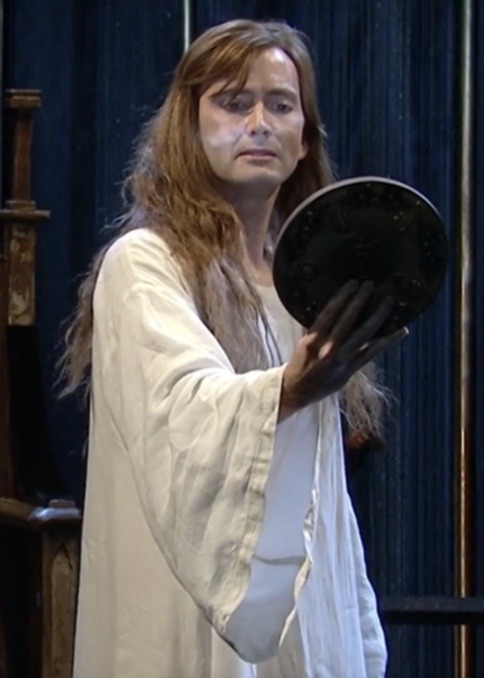
13K notes
·
View notes
Text
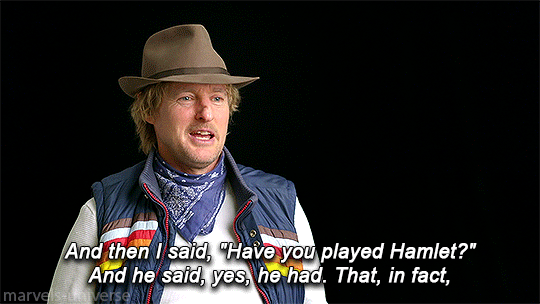

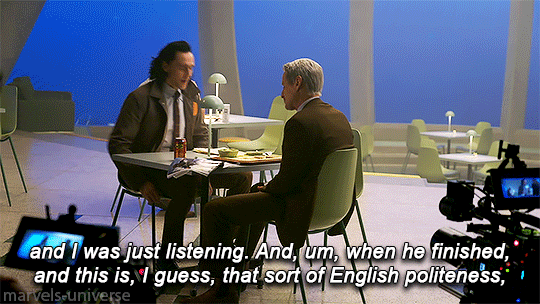



@giftober 2023 + @mcuchallenge prompt
Day 8: Funny.
Owen Wilson: I had a nice conversation one day where I was talking with Tom and he quoted something, and I said, "Is that Shakespeare?" And he said, "Yes, Hamlet." And I was proud just that I got the Shakespeare part.
- Marvel Studios Assembled. The Making of Loki
#giftober2023#mcuchallengefilled#marvelcastedit#marveledit#Owen Wilson#Tom Hiddleston#Hamlet#Shakespeare#hiddlesedit#Loki#lokitvsource#dailyloki#userelysia#tuserpolly#userflor#useraurore#tuserpris#noalook#usertammy#mcufam#marveldaily#dailymarvelstudios#Marvel Studios Assembled#to me‚ a lover of British actors‚ that was so funny#like of course that'd be such a natural thing for Tom to ask 🤭#that clash of the English and the American worlds 😄
17K notes
·
View notes
Text
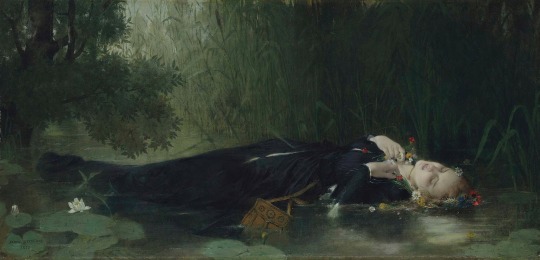
Ophelia by Jean-Baptiste Bertrand (1872)
#jean-baptiste bertrand#art#paintings#fine art#19th century#19th century art#academicism#academism#academic art#painting#french art#french artist#shakespeare#ophelia#hamlet#classic art
8K notes
·
View notes
Text
call me hamlet the way people only know me for my monologuing and homosexuality
9K notes
·
View notes
Text
Just Finished Hamlet...
Ok, Horatio was 100% in love with Hamlet, right? Hear me out, and most of this occurs in the final act:
Never believe it.
I am more an antique Roman than a Dane.
Here's yet some liquor left. [He picks up the cup]
- Horatio, Line 373-375
This is a reference to the way that, in certain circumstances (death of a loved one, a loved one being defeated, etc) Romans would sometimes resort to sort of... honor killing themselves? He was ready to DIE, to end his life THEN AND THERE, because he knew Hamlet was dying.
Now cracks a noble heart. Good night, sweet prince,
And flights of angels sing thee to thy rest.
- Horatio, Line 397-398
Good night, old friend? Good night, buddy pal? Nope. Good night, sweet prince. Sweet prince. Let flights of angels sing thee to thy rest. That's so poetic, I'm gonna cry.
Just the fact that, rather than follow Hamlet in death as he wished, he choses to honor his final wish and carry his story, his true story, and enact his wishes, shows me that Horatio loved Hamlet a great deal. And while it's fun to read some cute homo subtype into it, I also think it's a shining example of selfless male friendship. Horatio and Hamlet were soulmates, platonic or no. Send tweet.
#hamlet#shakespeare#horatio#horatio x hamlet#as soon as i found that tag i knew i wasn't alone#shakespeare's hamlet#senior english is a killa
38 notes
·
View notes
Text
Dead Guy Death Match Round 3 Poll: 16

#tournament polls#corpse bride#the corpse bride#hamlet#hamlet shakespeare#shakespeare's hamlet#emily corpse bride#corpse bride emily#ophelia#ophelia hamlet#hamlet ophelia#round 3
28 notes
·
View notes
Text
Everyone, we can fix Hamlet and Romeo & Juliet if we just switch the leads.
Romeo wakes up in Hamlet's body and meets the ghost of "his" father telling him to kill his uncle. So if course Romeo just fucking does it, because he never considers consequences, and then gets onto more important shit, like romancing Ophelia, political fallout be damned! But given that he's the son of the murdered king, he'd probably end up on top.
Hamlet wakes up as Romeo and is told that he can't marry the love of his life because his family hates her family. Instead of killing Tybalt and getting Merucio murdered, he's planning elaborate meet-cutes for the two warring families. He's putting on plays about blood feuds and how to overcome them. He either succeeds in bringing the families together or bores Juliet enough with his indecision that the glow wears off and she moves on; both positive options. Everybody lives.
#romeo and juliet#hamlet#i fixed it#everyone is happy we can go home#i don't know if Romeo should be king but he'll figure it out#i mean should Hamlet be king either?#monarchy problems#Shakespeare
5K notes
·
View notes
Text
My favorite Shakespeare thing is when he writes a major plot point but just has someone tell us about it to save on special effects.
Hamlet gets kidnapped by pirates but we don’t see that part. It’s a letter.
The Oracle of Delphi shows up in the Winter’s Tale and rather than do all the special effects required to make that adequately supernatural, two guys come on stage and go “woah that was cool”
There’s a big storm on the night that Duncan is murdered and we learn about this when half the cast of Macbeth says “sure was stormy last night”
Shakespeare, the OG low-budget director taking the easy way out.
5K notes
·
View notes
Text
Bro, my unyielding loyalty towards you is totally normal and healthy, I swear. It's just that it's definitely my duty to rip out your enemies throats with my bare teeth. You are the love of my life and I am your most valuable tool. Each night, I fantasize about dying in your arms, covered in blood, and then I close my eyes one final time, satisfied because I can feel your fingers on my face as I take my last breath. Haha anyways
#the iliad#patrochilles#shakespeare#hamlet#the locked tomb#griddlehark#one piece#roronoa zoro#our flag means death#this is both ed and stede at the same time#black sails#hey whats up with pirates why are they all like this#birdy chirps
39K notes
·
View notes